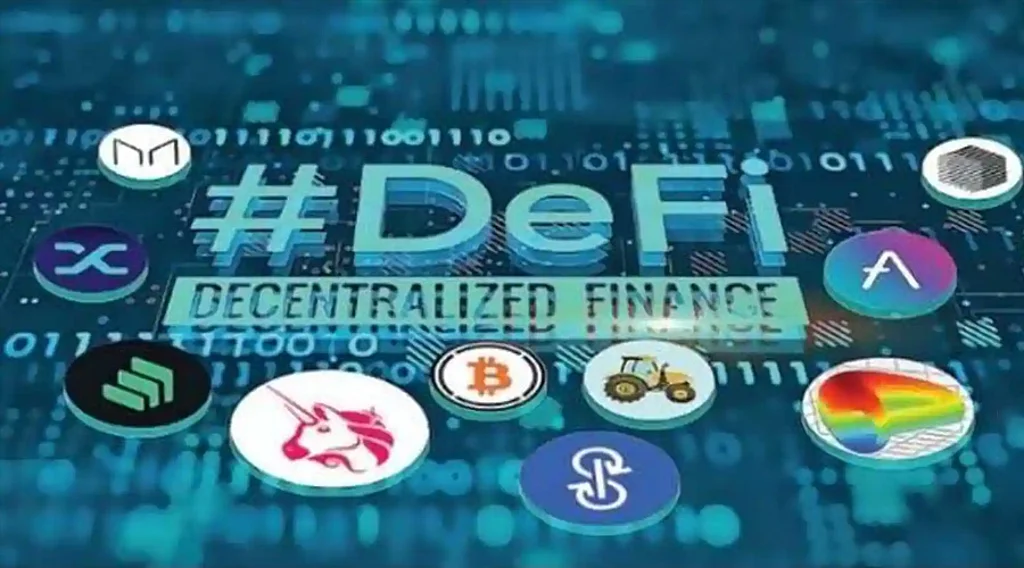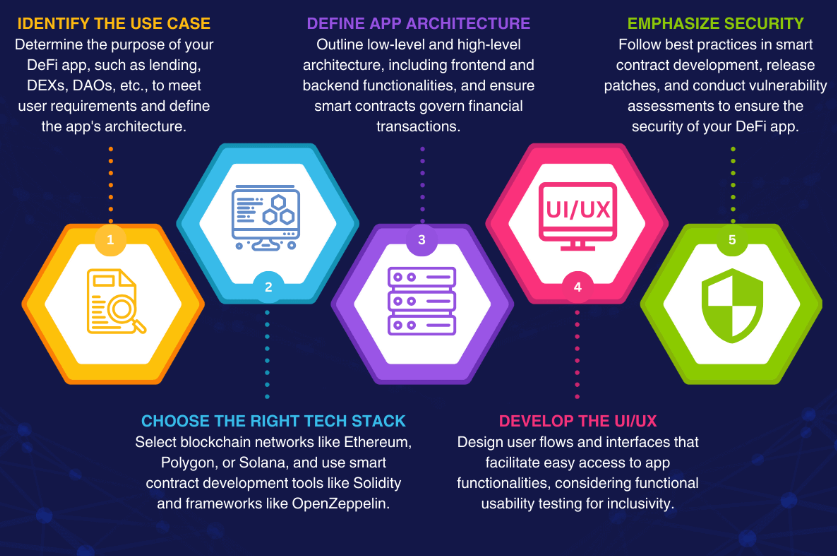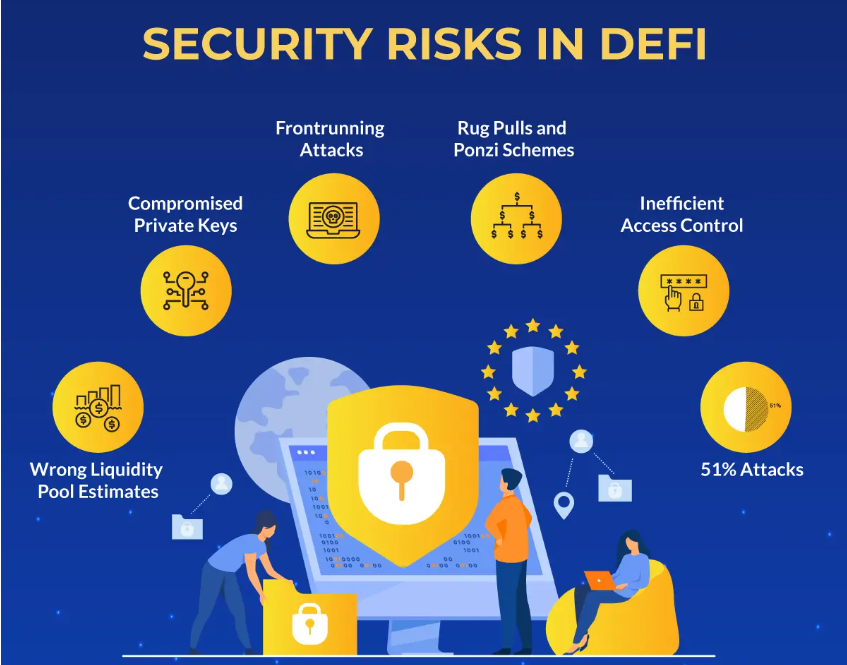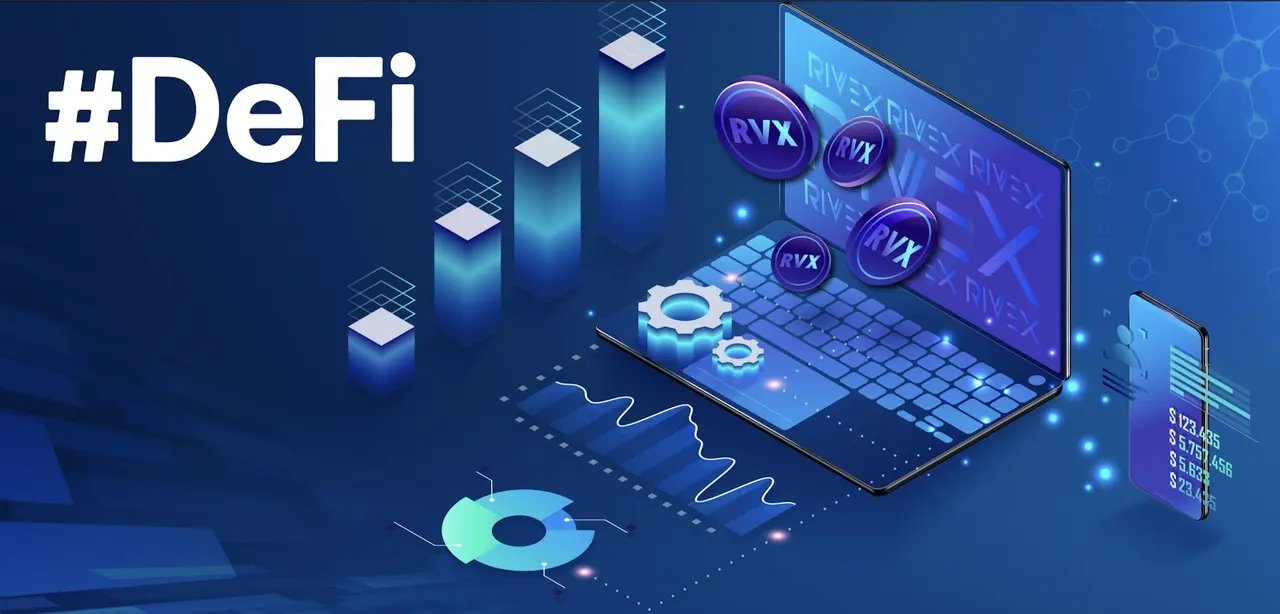Ever dreamed of creating a decentralized finance (DeFi) protocol that powers the future of finance? Whether you’re a seasoned coder or a curious beginner, building a DeFi protocol is an exciting journey that blends technical skills with creative vision. This guide simplifies the process, offering a clear roadmap for developers to design, deploy, and scale a successful DeFi protocol. From understanding blockchain basics to launching your project, we’ll walk you through each step in plain language, ensuring you’re ready to make your mark in the DeFi world.
What Is a DeFi Protocol? The Big Picture
A DeFi protocol is a set of smart contracts running on a blockchain, like Ethereum, that enables financial services without middlemen. Think of it as a digital bank where users can lend, borrow, trade, or stake assets—all powered by code. Examples include Uniswap for trading and Aave for lending. As a developer, building a DeFi protocol means creating the rules and tools that make these services possible.

Why build one? DeFi protocols are in high demand, offering opportunities to solve real-world financial problems, attract users, and even earn rewards through governance tokens. Plus, it’s a chance to flex your coding skills and contribute to a decentralized future.
Who Can Build a DeFi Protocol?
You don’t need to be a blockchain guru to start. Basic programming knowledge (like JavaScript or Python) and a willingness to learn Solidity, Ethereum’s smart contract language, are enough. This guide is designed for developers at any level, making complex concepts accessible.
Step-by-Step Guide to Building Your DeFi Protocol
Creating a DeFi protocol involves planning, coding, testing, and launching. Here’s a beginner-friendly roadmap to get you started.
Step 1: Define Your Protocol’s Purpose
Every successful DeFi protocol solves a specific problem. Want to create a lending platform like Aave or a decentralized exchange like Uniswap? Start by identifying your niche. Ask yourself:
- What financial service will your protocol offer?
- Who is your target audience (e.g., traders, lenders)?
- How will it stand out from existing protocols?
For example, you might design a protocol for low-fee stablecoin lending. Write a clear project brief to guide your development.
Step 2: Learn the Tools and Technologies
Building a DeFi protocol requires a few key tools:
- Solidity: The primary language for Ethereum smart contracts.
- Hardhat or Truffle: Development frameworks for testing and deploying contracts.
- MetaMask: A wallet to interact with your protocol during testing.
- Infura or Alchemy: Services to connect your protocol to the Ethereum blockchain.

Start with free resources like CryptoZombies or the Solidity documentation to learn smart contract coding. Practice by building simple contracts, like a token or a basic staking system.
Step 3: Design Your Smart Contracts
Smart contracts are the heart of your protocol. They define how users interact with your service, such as depositing funds or earning rewards. For a lending protocol, you might code contracts to:
- Accept deposits and track balances.
- Calculate interest for lenders.
- Handle withdrawals securely.
Use existing protocols as inspiration. Open-source platforms like Compound share their code on GitHub, letting you study real-world examples. Keep your code modular and well-documented for easier maintenance.
Step 4: Test Rigorously
Bugs in smart contracts can be catastrophic, leading to lost funds or hacks. Use Hardhat or Truffle to write automated tests for your contracts. Test scenarios like:
- Edge cases (e.g., zero deposits).
- Security vulnerabilities (e.g., reentrancy attacks).
- User interactions (e.g., borrowing and repaying).
Consider hiring a professional auditor, like OpenZeppelin, to review your code before launch. This step is critical to building trust with users.
Step 5: Deploy to a Blockchain
Once tested, deploy your protocol to a blockchain. Start with a testnet like Ropsten or Sepolia to simulate real-world conditions without spending real money. When ready, deploy to the Ethereum mainnet or a layer-2 network like Polygon for lower fees. Tools like Hardhat make deployment straightforward.
Pro Tips for a Successful DeFi Protocol
Building a protocol is just the start. To stand out and succeed, follow these proven strategies.
Focus on Security
Security is non-negotiable in DeFi. Use established libraries like OpenZeppelin’s for common functions (e.g., ERC-20 tokens) to reduce risks. Implement multi-signature wallets for protocol governance and regularly update your contracts to address new threats.

Build a User-Friendly Interface
A great protocol needs a great front end. Use frameworks like React to create a clean, intuitive interface where users can interact with your smart contracts. Study Uniswap’s simple design for inspiration—clear buttons for actions like “Swap” or “Stake” make a big difference.
Engage Your Community
DeFi thrives on community trust. Share your progress on Twitter, Discord, or GitHub to attract early adopters. Offer governance tokens to incentivize user participation, letting them vote on protocol upgrades. Transparency builds loyalty and drives adoption.
Overcoming Common Challenges
Building a DeFi protocol isn’t without hurdles. Here’s how to tackle the biggest ones.
High Development Costs
Ethereum’s gas fees and audit costs can add up. To save money, develop on layer-2 solutions like Optimism or test thoroughly on testnets to avoid costly mainnet mistakes. Budget for audits as a non-negotiable expense.
Keeping Up with DeFi Trends
DeFi evolves fast. Stay informed by following blogs like Bankless, joining DeFi Pulse’s newsletter, or participating in hackathons. Experiment with emerging trends, like cross-chain protocols, to keep your project relevant.
Regulatory Uncertainty
DeFi operates in a gray legal area. While you can’t predict regulations, design your protocol with compliance in mind—avoid centralized control points and prioritize decentralization. Consult a crypto-legal expert if launching a large-scale project.
Scaling Your Protocol to Success
Once your protocol is live, focus on growth. Integrate with other DeFi platforms (e.g., add your token to Uniswap) to increase liquidity. Explore partnerships with wallets like MetaMask to improve accessibility. Monitor user feedback to refine features and fix bugs.

Track your protocol’s performance using tools like Dune Analytics to analyze user activity and transaction volume. As your user base grows, consider launching a governance model to decentralize control and reward contributors.
Your DeFi Developer Journey Begins
Building a DeFi protocol is a bold step toward shaping the future of finance. Start with a clear vision, master the tools, and prioritize security and community. With persistence and creativity, your protocol could become the next big thing in DeFi, transforming how people interact with money.
Ready to code? Fire up your IDE, dive into Solidity, and start building. The DeFi revolution is waiting for your contribution.






















